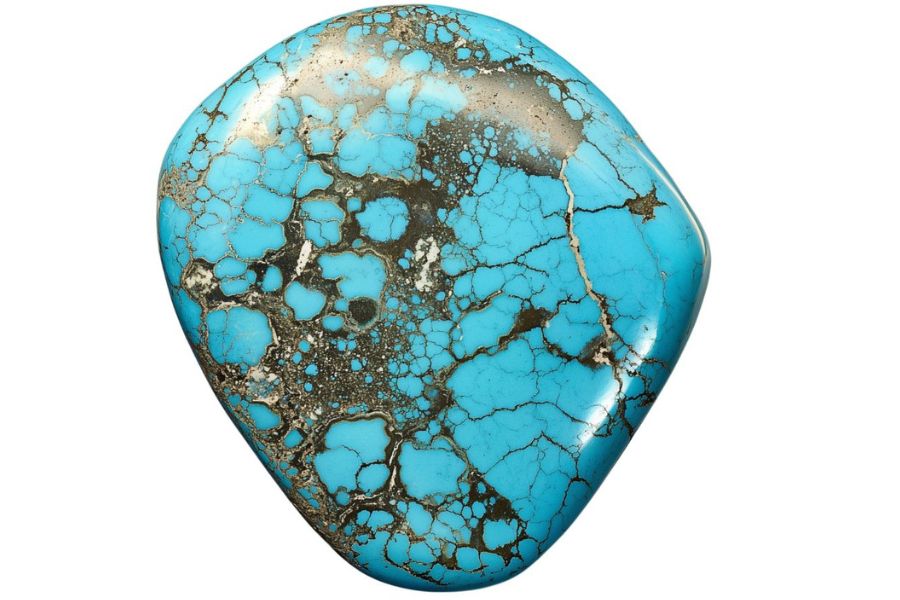Michigan’s unique geological history dates back over a billion years, shaped by ancient volcanic activity and massive glacial movements.
While the state isn’t naturally rich in turquoise, the hunt for this beautiful blue stone has become increasingly popular here.
Many rock enthusiasts spend countless hours searching in the wrong places, wasting time and coming home empty-handed. We know how frustrating that can be – we’ve been there too.
That’s why we’ve put together a list of the best spots to find turquoise in Michigan. We’ve done the legwork, talked to local collectors, and mapped out locations that actually yield results.
How Turquoise Forms Here
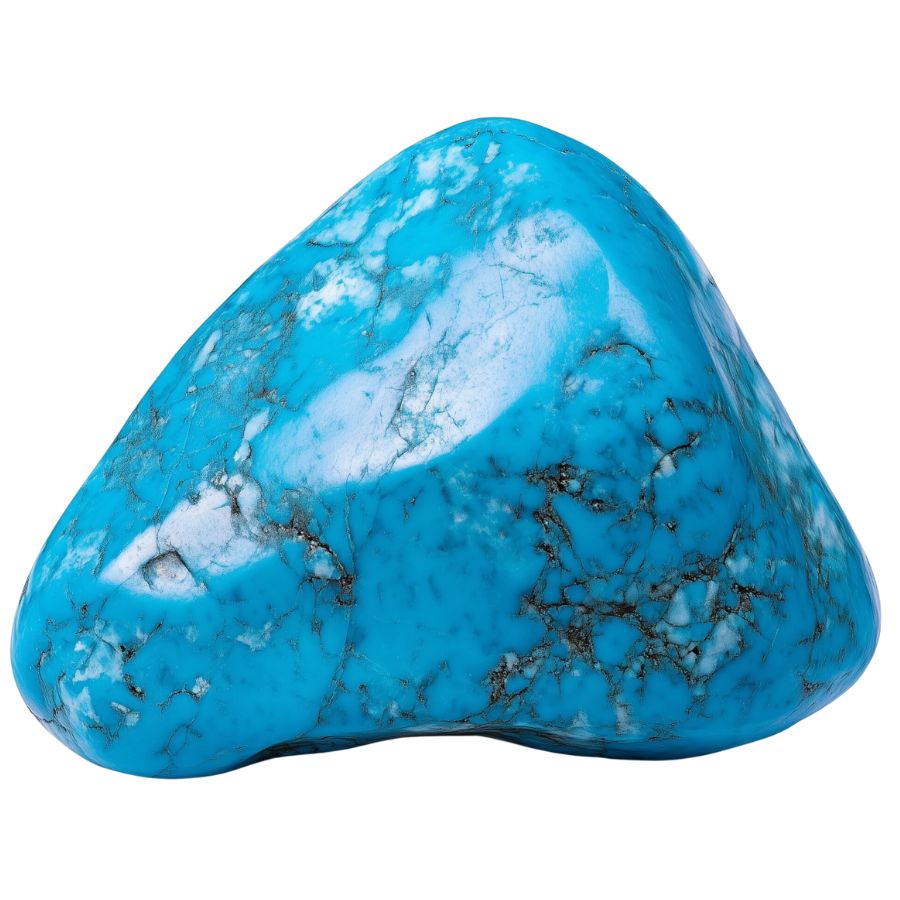
Turquoise forms through a unique process involving water and minerals. It begins when acidic water seeps into the ground, moving through rocks that contain copper and aluminum.
As this water interacts with these minerals, it breaks them down and allows the copper and aluminum to combine with phosphorus, creating turquoise.
This usually happens in shallow areas, often less than 20 meters deep, where the environmental conditions are just right.
This mineral typically fills cracks and cavities in rocks, often in dry, desert-like areas. The presence of iron can also influence its color, giving it beautiful shades of blue and green.
Over time, the turquoise hardens, resulting in the stunning gem we see today, prized for its vibrant hues and unique patterns.
The Types Of Turquoise Found in the US
Turquoise comes in a variety of stunning types, found in the US as well as in our state. Here are the types of turquoise found in the US:
Kingman Turquoise
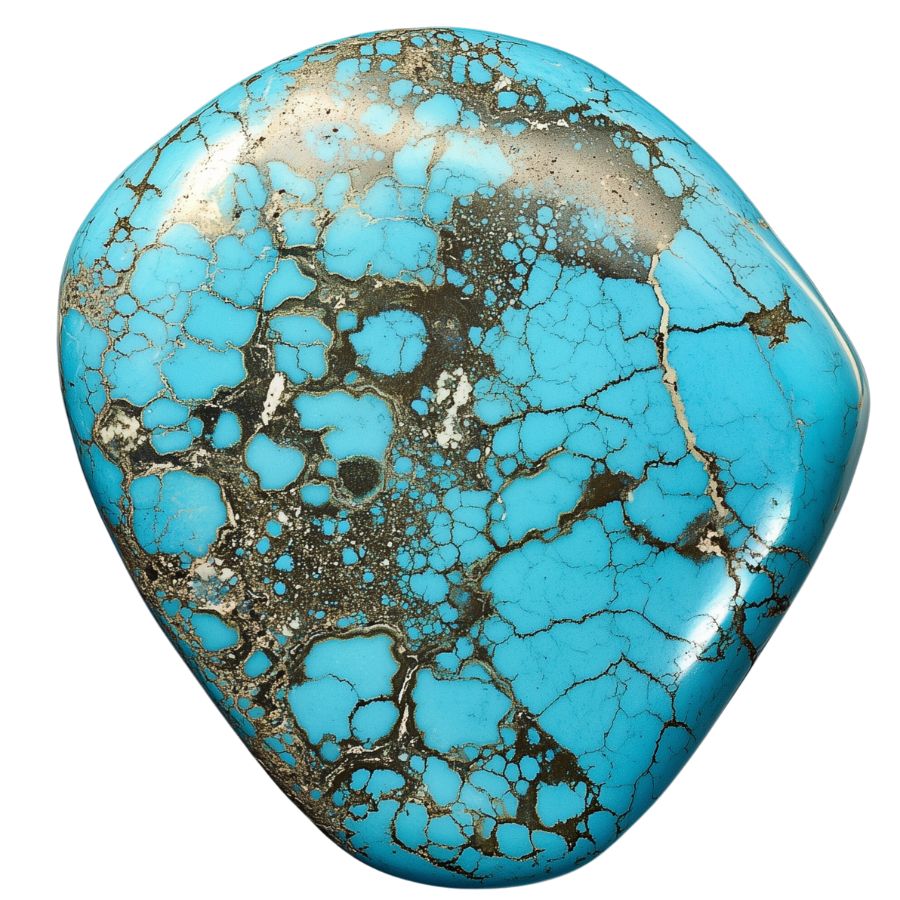
Kingman Turquoise showcases a vibrant range of colors from pale green to deep “high blue.” Its matrix patterns can include white, light brown, or black veining, setting it apart from other turquoise types.
This stone is often stabilized to enhance its durability and color, allowing for broader use in jewelry making. The natural Kingman turquoise typically presents a medium blue hue with a water web matrix.
Kingman Turquoise is recognized as one of the most sought-after American turquoise. Its consistent supply has made it a staple in Native American jewelry and artisan crafts, contributing to its ongoing popularity.
Carico Lake Turquoise
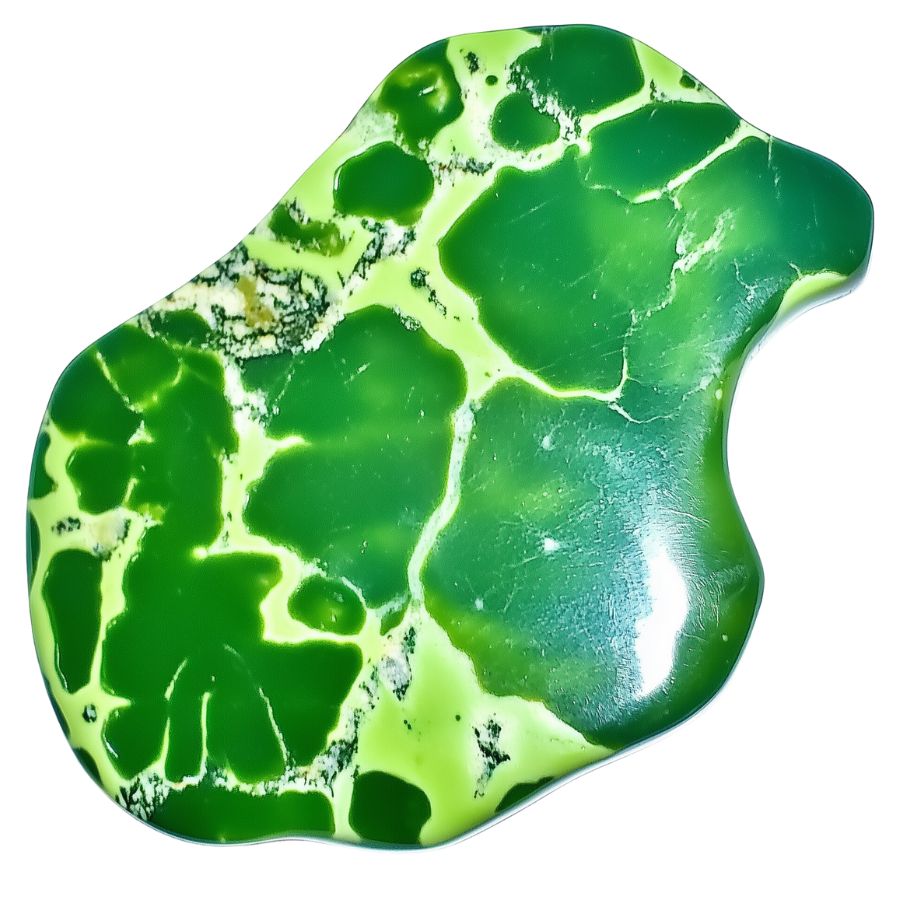
Carico Lake Turquoise is known for its clear robin’s egg blue to vibrant lime green colors. It often features a unique spider-web matrix in brown or, more rarely, black, adding texture and shine to the stone.
What makes this stone special is its high zinc concentration, which gives it an electric lime-green hue. This color is both rare and desirable among turquoise varieties.
Gem-quality Carico Lake Turquoise is scarce, making up less than 3% of the mine’s annual output. This rarity, combined with its natural beauty, makes it a prized item for collectors and enthusiasts alike.
Lone Mountain Turquoise
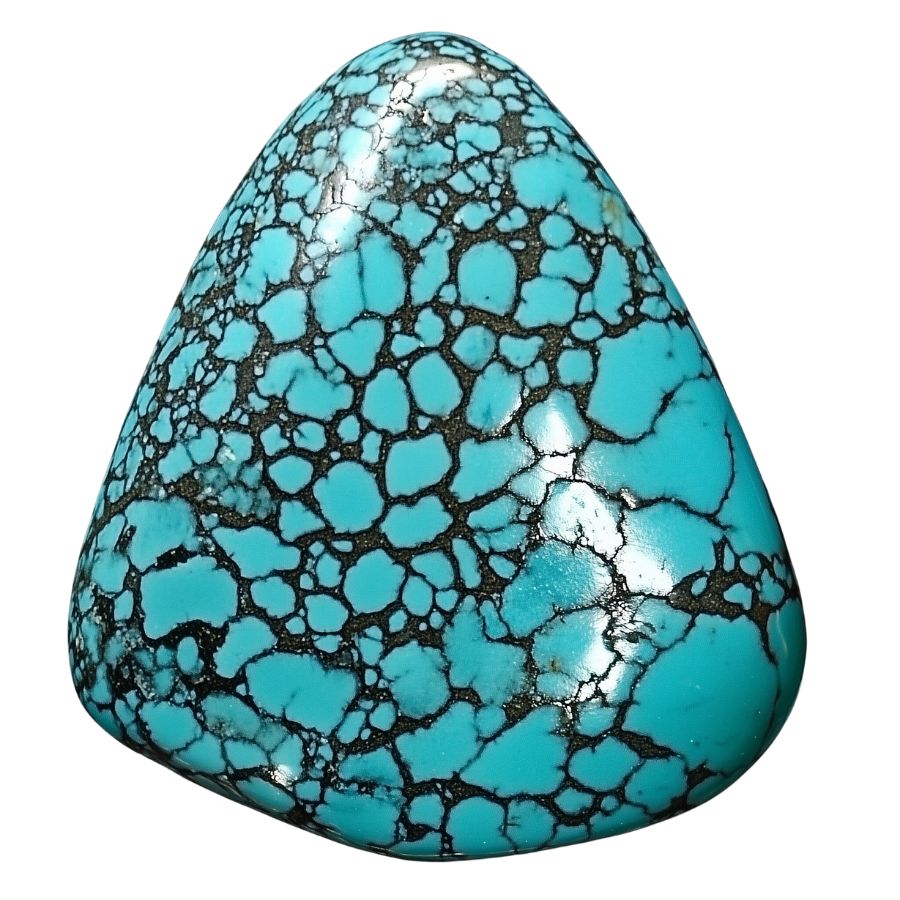
Lone Mountain Turquoise is known for its bright blue to deep green colors, often featuring intricate spider web matrix patterns. These fine lines create a web-like design, enhancing its visual appeal.
This stone stands out for its exceptional hardness and color retention. It maintains its vibrant hue over time, a quality not common in all turquoise varieties.
Lone Mountain Turquoise is highly valued in the collector’s market, second only to Lander Blue Turquoise. Its ability to produce high-quality spider web turquoise makes it a favorite among jewelry artisans and collectors.
Morenci Turquoise
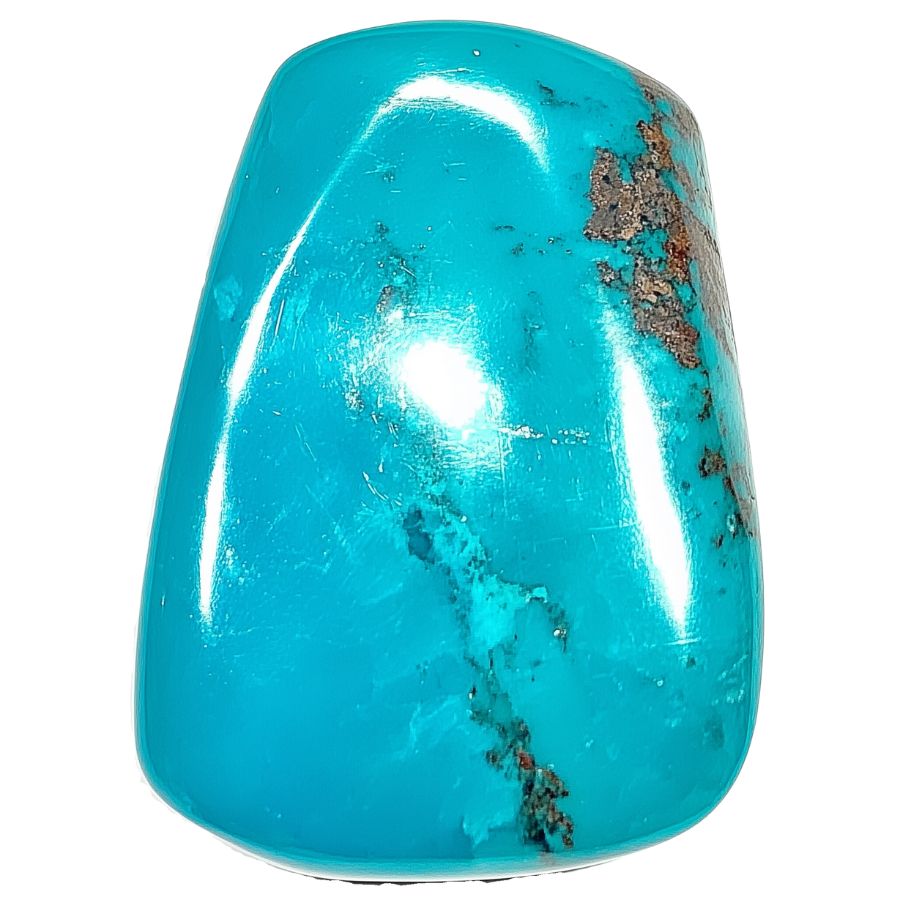
Morenci Turquoise stands out with its deep blue color, a result of its high copper content.
Its most striking feature is the iron pyrite matrix, which gives it a metallic shimmer when polished. Some pieces also show a water web matrix, creating dark blue webbing patterns.
This stone is no longer mined, making it rare and highly collectible. All available Morenci Turquoise comes from mining operations that stopped in 1984.
High-grade pieces, known for vibrant blues and pyrite matrix, make up less than 10% of the total yield.
Pilot Mountain Turquoise
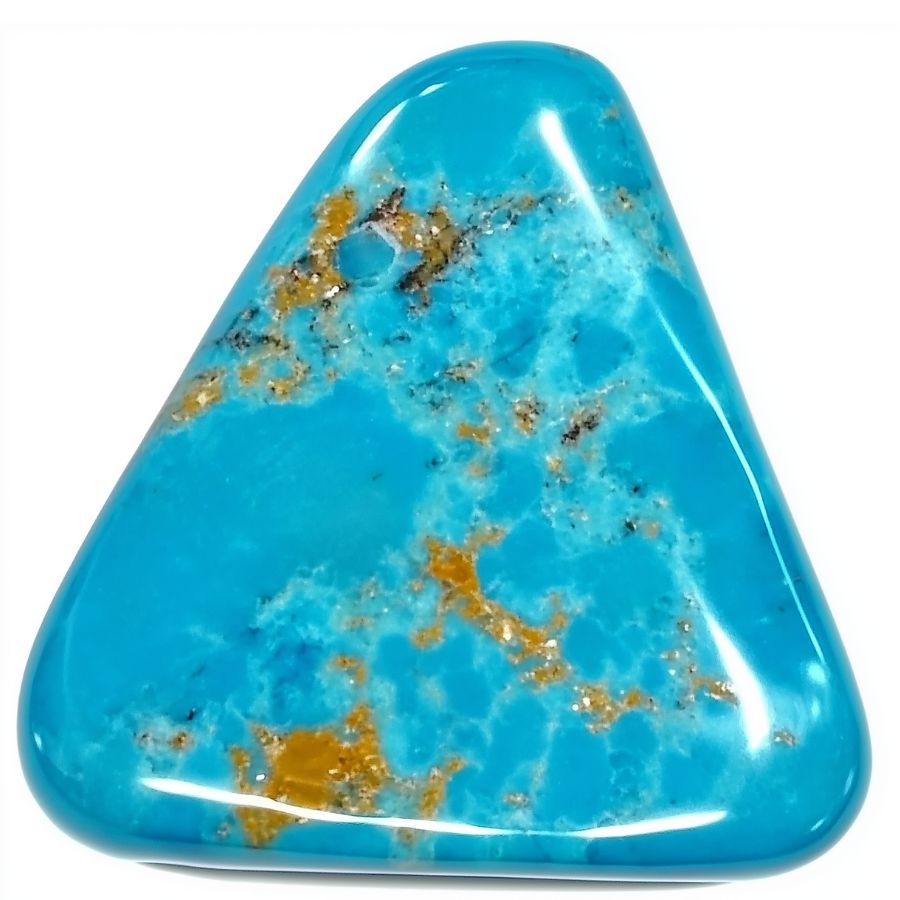
Pilot Mountain Turquoise catches the eye with its bright to dark blue hues, often showing a greenish tint.
What makes it special is its brownish-red limonite matrix, creating beautiful mottled patterns. The stone forms in hard veins, thin seams, or nuggets.
This turquoise has an interesting history, first mined around 1930. It’s known for its limited availability, with only 150 to 200 pounds of rough stone extracted twice a year. This scarcity adds to its appeal.
The unique mottled patterns of the limonite matrix make Pilot Mountain Turquoise a favorite for decorative pieces and jewelry.
Sleeping Beauty Turquoise
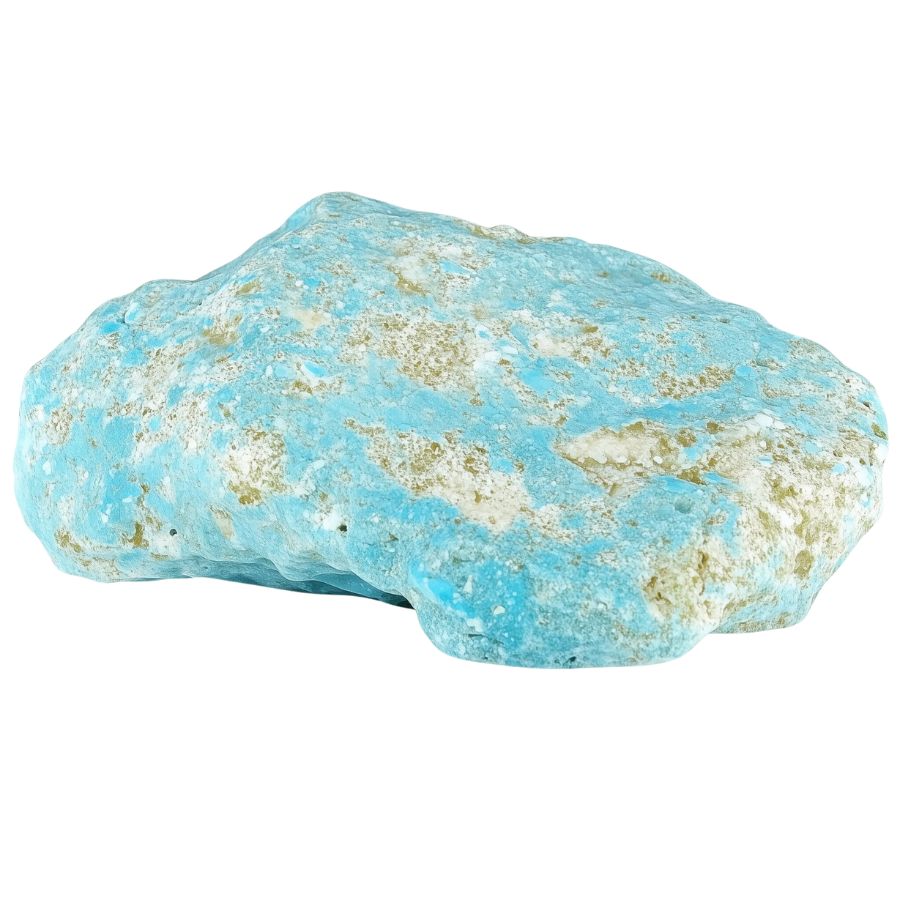
Sleeping Beauty Turquoise is famous for its vivid sky-blue color. Unlike many other turquoise types, it has little to no veining or matrix, giving it a pure, consistent look. The color can range from light robin’s egg blue to deeper sky blue.
This stone is naturally hard, which means it doesn’t need stabilization for use in jewelry. This quality makes it popular with jewelers. The Sleeping Beauty mine closed in 2012, making the stone rarer and more valuable.
Sleeping Beauty Turquoise became a hit in the 1970s and 80s, used in both Native American jewelry and mainstream fashion. Its consistent quality and vibrant color have made it a standard in Southwestern jewelry.
Bisbee Turquoise
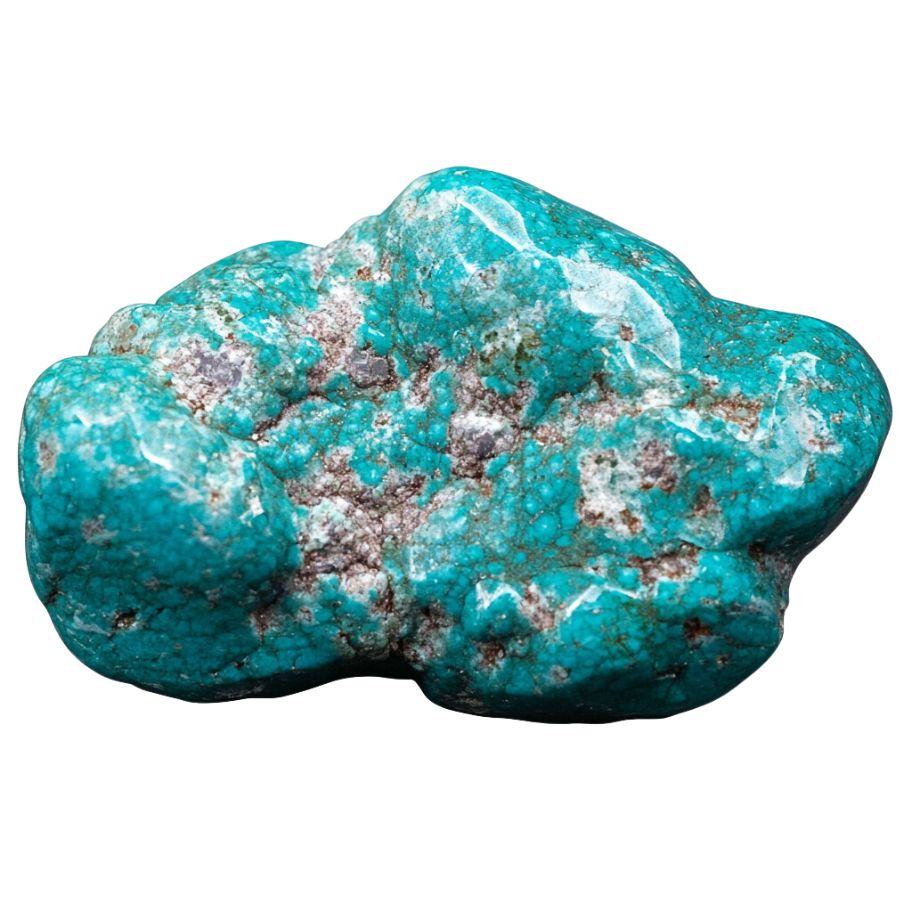
Bisbee Turquoise stands out with its vibrant blue shades, ranging from deep indigo to light robin’s egg blue. Green hues are less common but still occur.
Its distinctive matrix often displays a striking spiderweb pattern against a reddish-brown backdrop.
This stone’s unique appearance comes from its host rock color and gloss. Unlike some turquoise with metallic matrices, Bisbee’s matrix is typically more earthy and varied in color.
Bisbee Turquoise is highly valued for its quality and rarity. Its historical significance, being one of the oldest turquoise sources in North America, adds to its appeal among collectors and enthusiasts.
Royston Turquoise
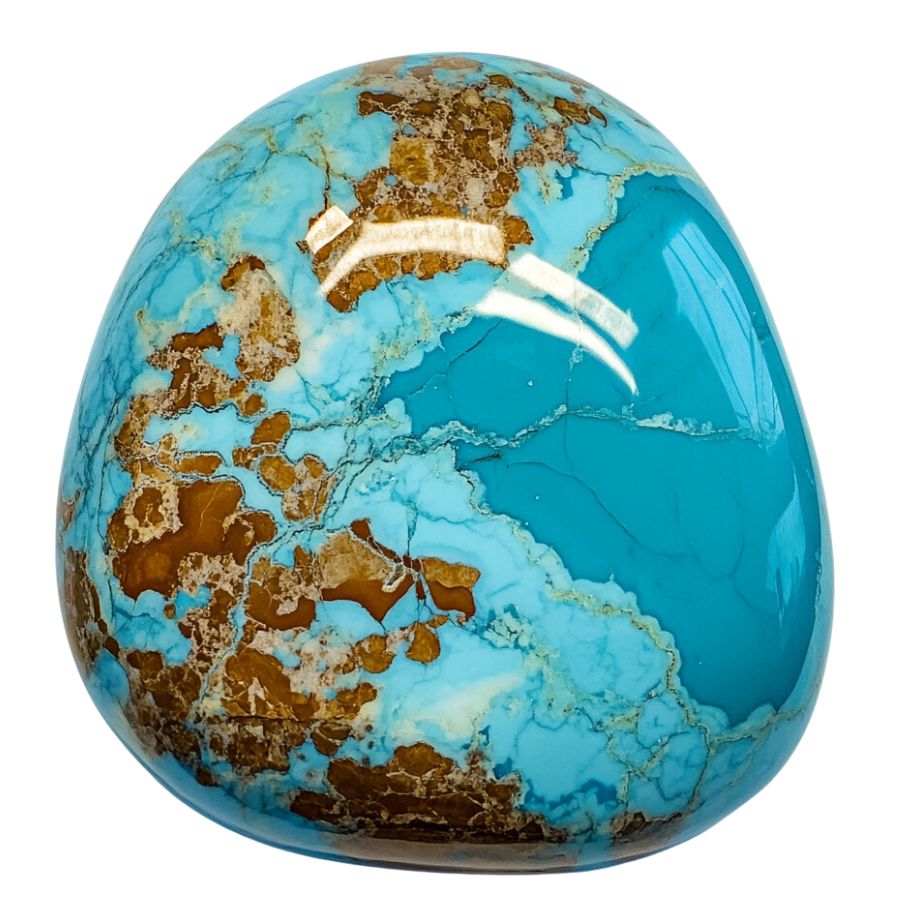
Royston Turquoise is a gem of many faces. Its colors can shift dramatically, even within a single stone.
You might find a piece that starts as a soft blue and gradually transforms into a rich green. This color play is a hallmark of Royston Turquoise.
The stone’s matrix is equally fascinating. The matrix can create intricate landscapes within the turquoise, resembling golden sunsets or stormy skies.
Royston Turquoise is also known for its ability to take an exceptionally high polish. This quality, combined with its natural hardness, makes it a favorite for jewelry that can withstand daily wear.
Dry Creek Turquoise
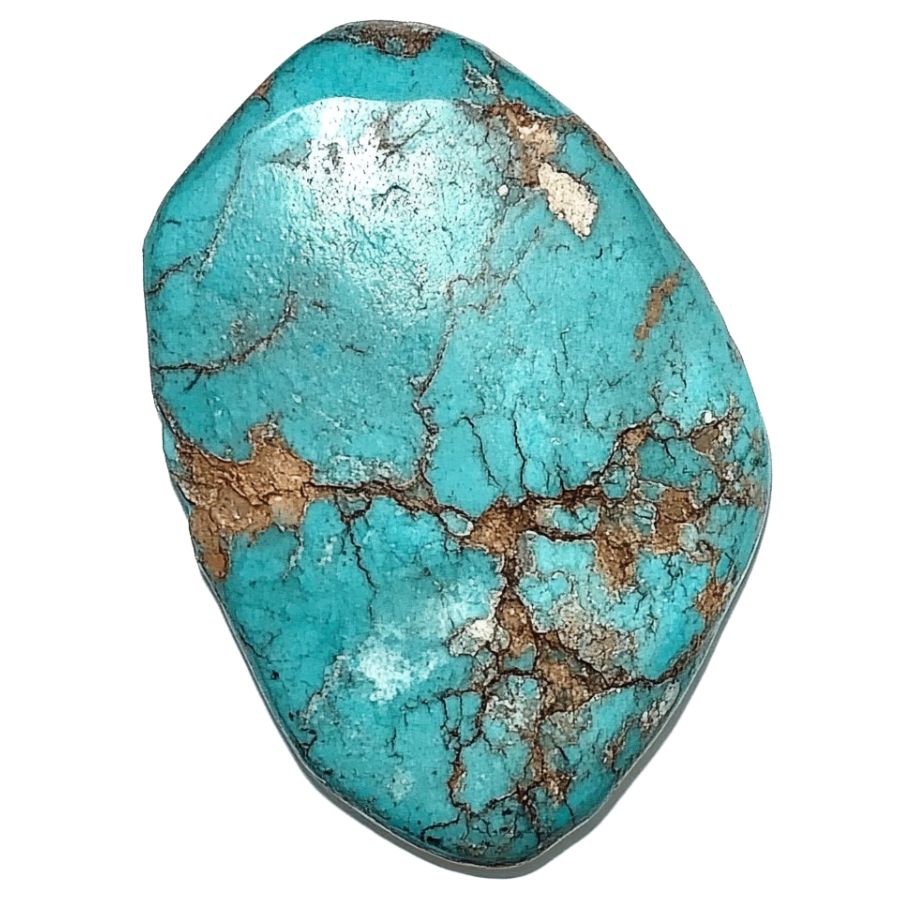
Dry Creek Turquoise stands out with its pale pastel blue color, similar to Larimar. It often has light brown, golden yellow, or orange webbed matrices, adding to its beauty.
Unlike many turquoise types, it’s naturally hard and takes a stunning polish without treatment.
This stone is quite rare. It was discovered in the 1990s in an area with low levels of heavy metals. These metals usually give turquoise its bright colors. The unique geological setting results in Dry Creek’s captivating pale blue hue.
The natural hardness and ability to take a high polish make Dry Creek Turquoise special.
Ithaca Peak Turquoise
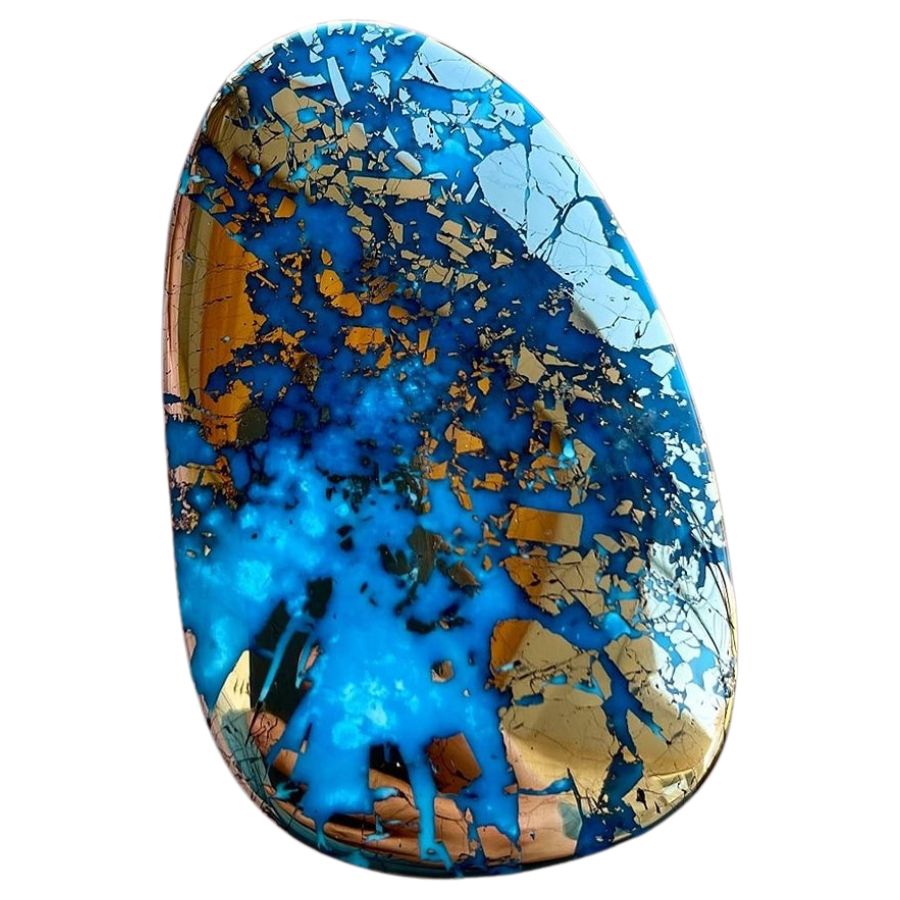
Ithaca Peak Turquoise is known for its stunning range of blues. It can be light blue with black spider-webbing or deep rich blue with black matrix.
Some pieces even have quartz matrix and pyrite inclusions. The most valued stones have vibrant to dark blues with good pyrite inclusions.
What makes this stone unique is its pyrite. In Ithaca Peak Turquoise, the pyrite often has a brassy color. This helps tell it apart from similar stones like Morenci turquoise.
Recently mined Ithaca Peak Turquoise looks different from older pieces. The new stones are lighter blue to green and usually don’t have a webbed matrix. This change in appearance over time adds to the stone’s interesting history.
What Raw Turquoise Looks Like
When you’re going to collect the raw turquoise, it’s important to know what to look for. Let’s talk about how you can identify genuine raw turquoise.
You only need to know a few things in order to find it, but having a guide will be very helpful.
DON'T MISS OUT ON ANY GREAT FINDS!
While you're out searching for Turquoise you're going to find A LOT of other interesting rocks and minerals along the way. The last thing you want to do is toss out something really interesting or valuable. It can be easy to misidentify things without a little guidance.
You absolutely need a good reference guide in order to understand what you're looking at!
We've put together a fantastic field guide that makes identifying 140 of the most interesting and valuable rocks and minerals you will find REALLY EASY. It's simple to use, really durable, and will allow you to identify just about any rock and mineral you come across. Make sure you bring it along on your hunt!
Now, back to the identification specifics:
Look for the Blue-Green Color
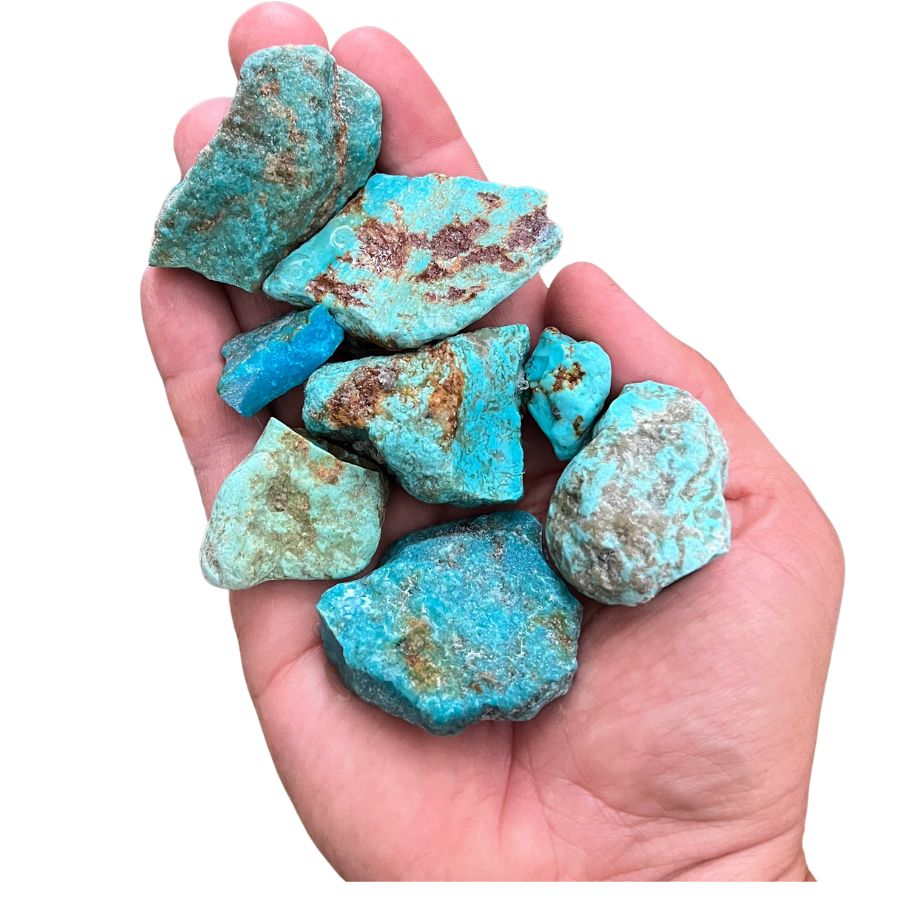
The color is the big clue. Rough turquoise is often blue or green, sometimes with hints of both.
The blue comes from copper, while the green hints at more iron or other minerals.
Real turquoise tends to have a more vibrant, consistent color. If it looks too perfect, like solid blue or green with no variations, be cautious. Nature isn’t that perfect!
Assess the Density and Weight
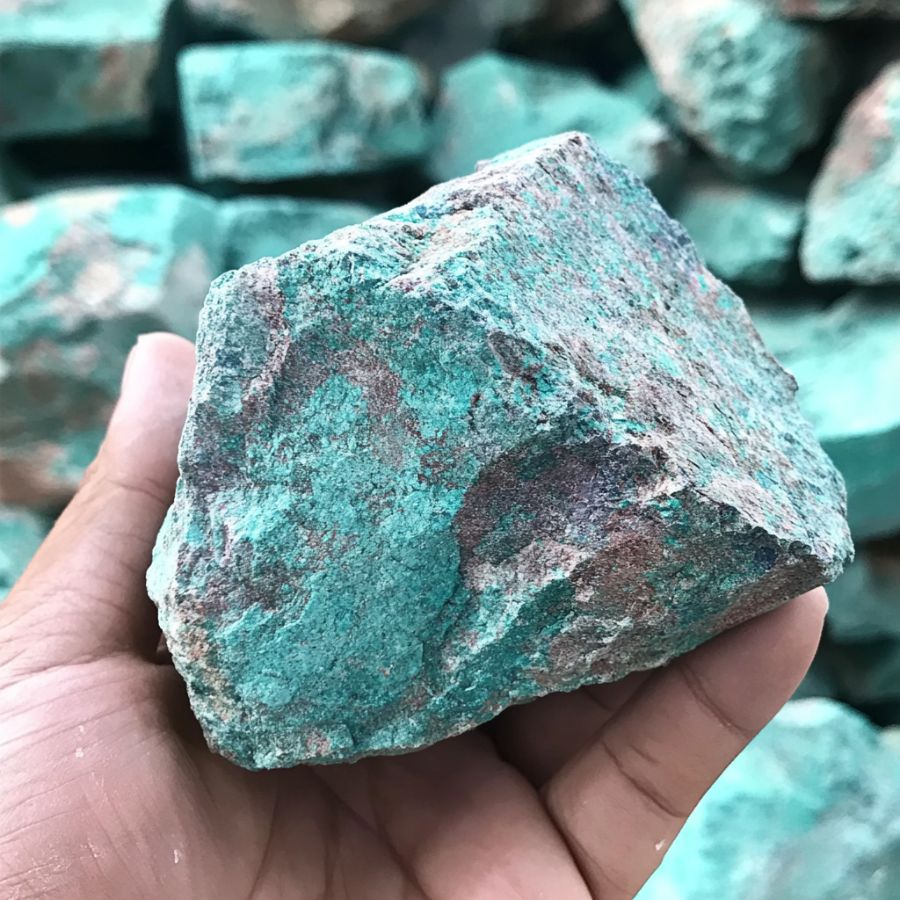
Pick up the stone and feel its weight. Real turquoise is pretty dense, so it feels heavier than it looks. If the stone feels too light, it might not be genuine.
Authentic turquoise has a specific gravity of about 2.5 to 2.9, making it heavier than many imitations.
The density comes from the minerals packed tightly together over millions of years. A heavier stone usually means a better-quality piece.
Check for a Glassy or Waxy Luster
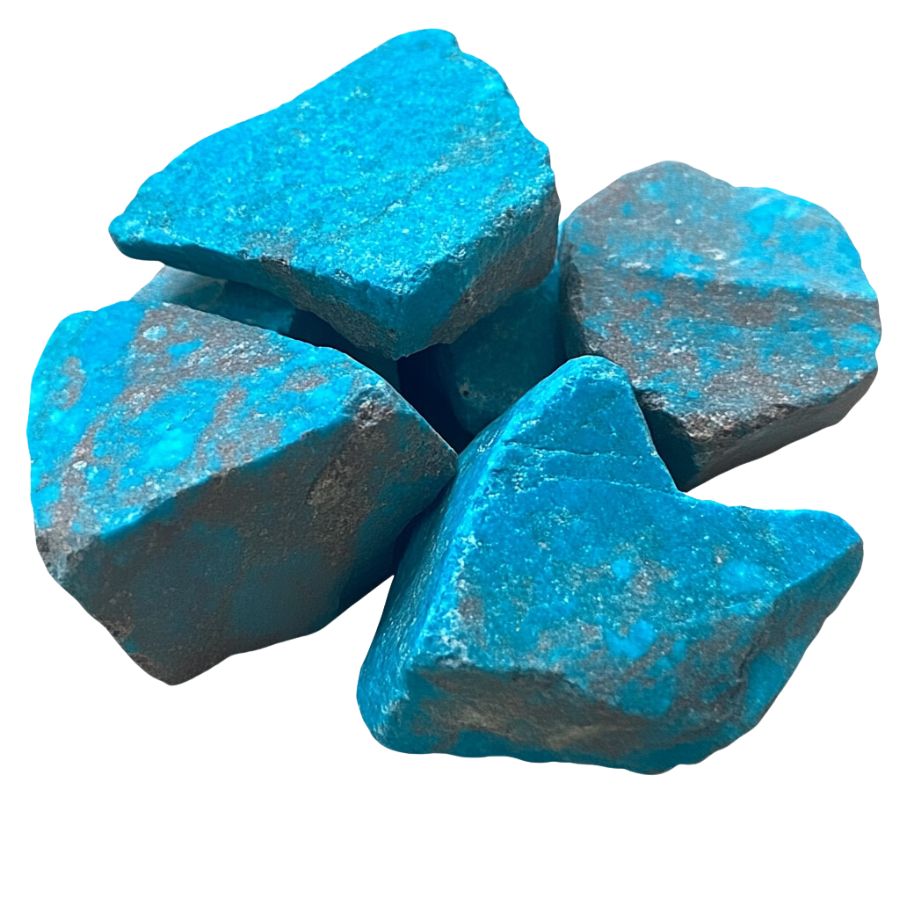
Rough turquoise often has a glassy or waxy luster, not too shiny but not dull either. When you hold it up to the light, the surface might have a soft, smooth sheen. This luster is key.
A rough piece with a good luster usually indicates that it’s real turquoise and not a fake. You’ll notice that it reflects light in a muted way, not too bright.
Consider the Stone’s Shape and Texture
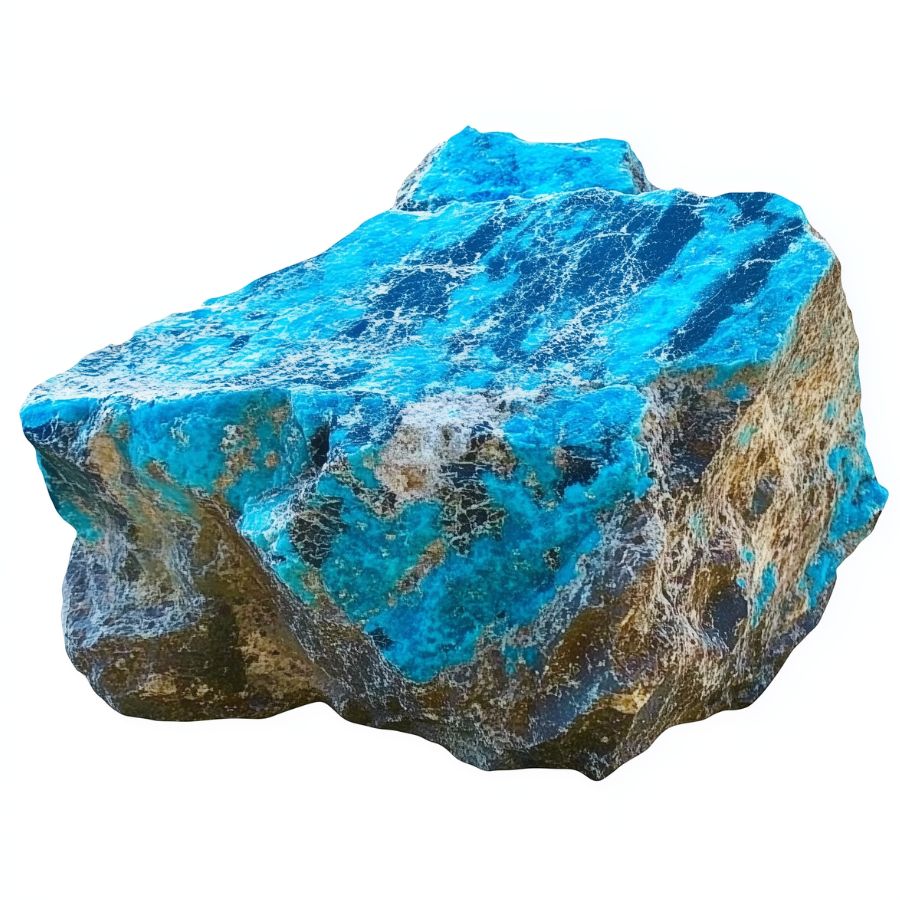
Rough turquoise isn’t always smooth. It often has a bumpy, uneven texture because it forms in cracks and crevices of other rocks.
The stone’s shape might be irregular or lumpy. This natural texture is a telltale sign that you’re holding real turquoise and not a polished or treated piece.
A Quick Request About Collecting
Always Confirm Access and Collection Rules!
Before heading out to any of the locations on our list you need to confirm access requirements and collection rules for both public and private locations directly with the location. We haven’t personally verified every location and the access requirements and collection rules often change without notice.
Many of the locations we mention will not allow collecting but are still great places for those who love to find beautiful rocks and minerals in the wild without keeping them. We also can’t guarantee you will find anything in these locations since they are constantly changing.
Always get updated information directly from the source ahead of time to ensure responsible rockhounding. If you want even more current options it’s always a good idea to contact local rock and mineral clubs and groups
Tips on where to look
Once you get to the places we have listed below there are some things you should keep in mind when you’re searching:
Riverbeds
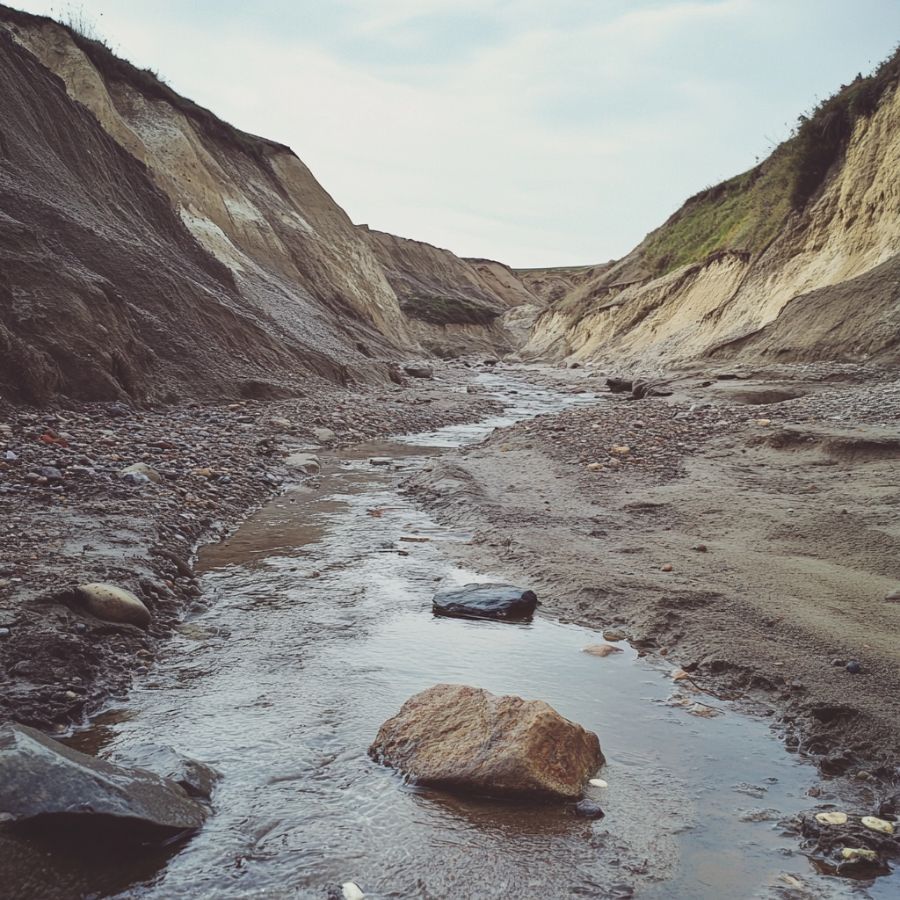
Look for turquoise in riverbeds. Over time, water flow can expose hidden stones.
Sediment may hold the gems you’re after. Be prepared to dig through gravel and dirt to find them.
Abandoned Mines
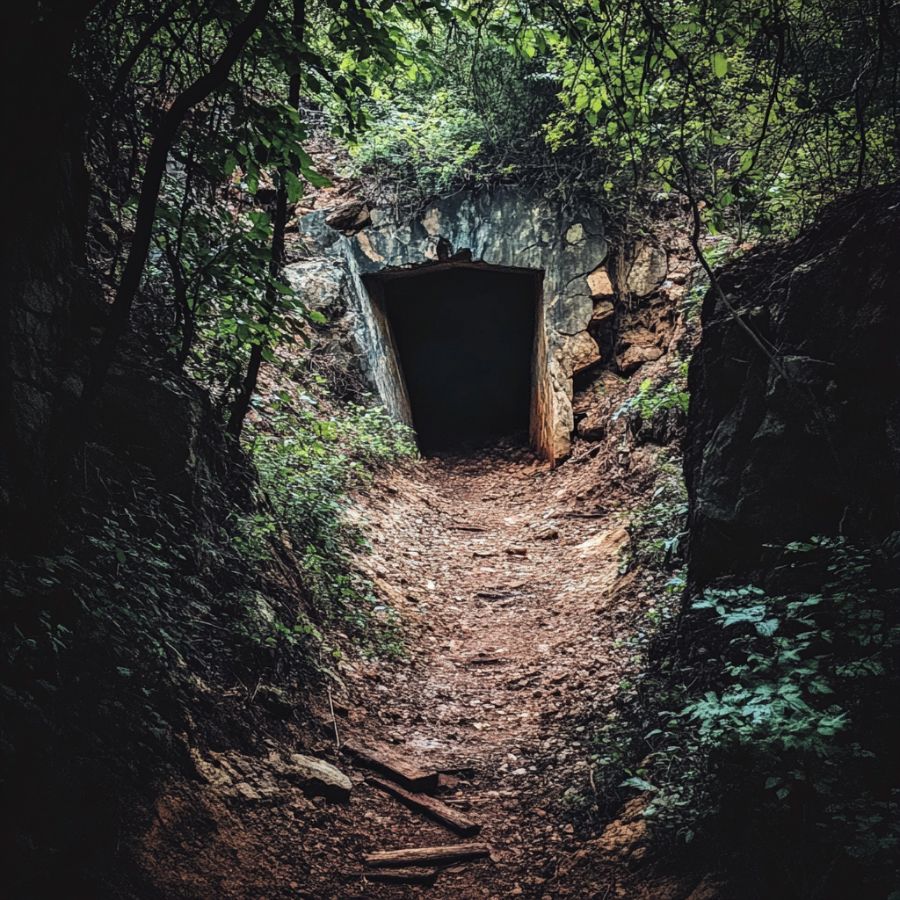
Old mines can be treasure troves for turquoise. These sites often have loose rocks where turquoise might be hiding.
Always be careful while exploring abandoned areas, though.
Hillsides
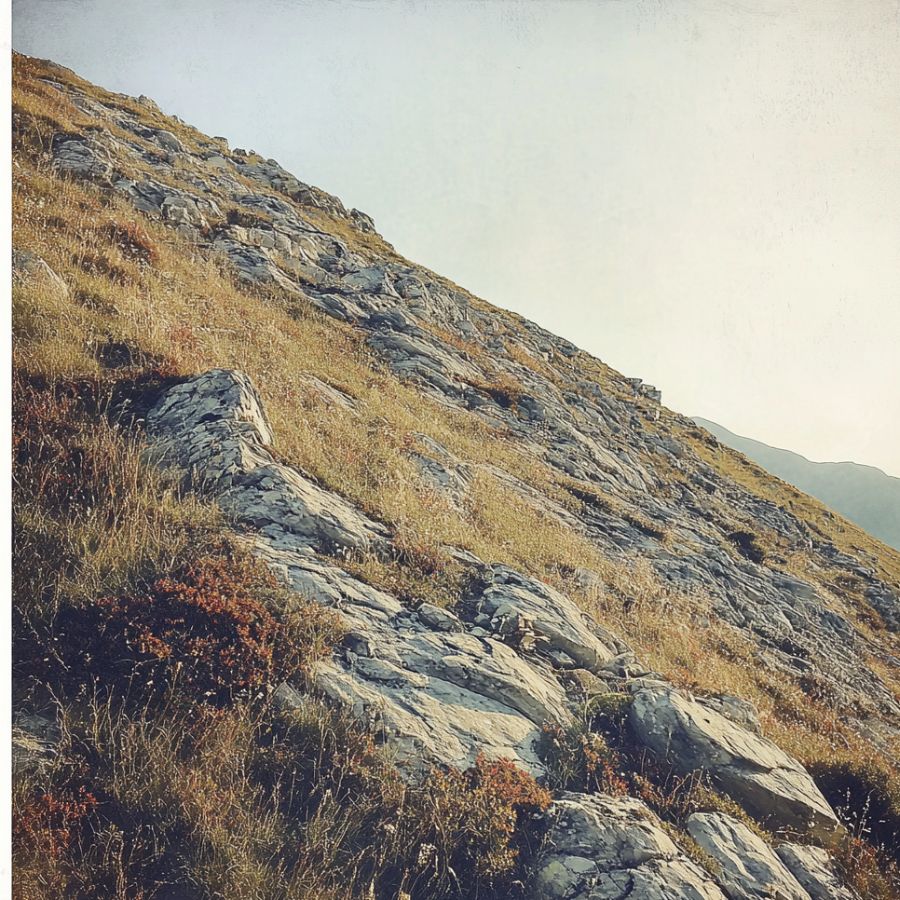
Check hillsides, especially where erosion is visible. Rain and wind can uncover layers of earth, exposing turquoise.
It’s a bit of a hunt, but it can be rewarding. Sometimes, you’ll find small stones just lying on the surface.
Rocky Outcrops
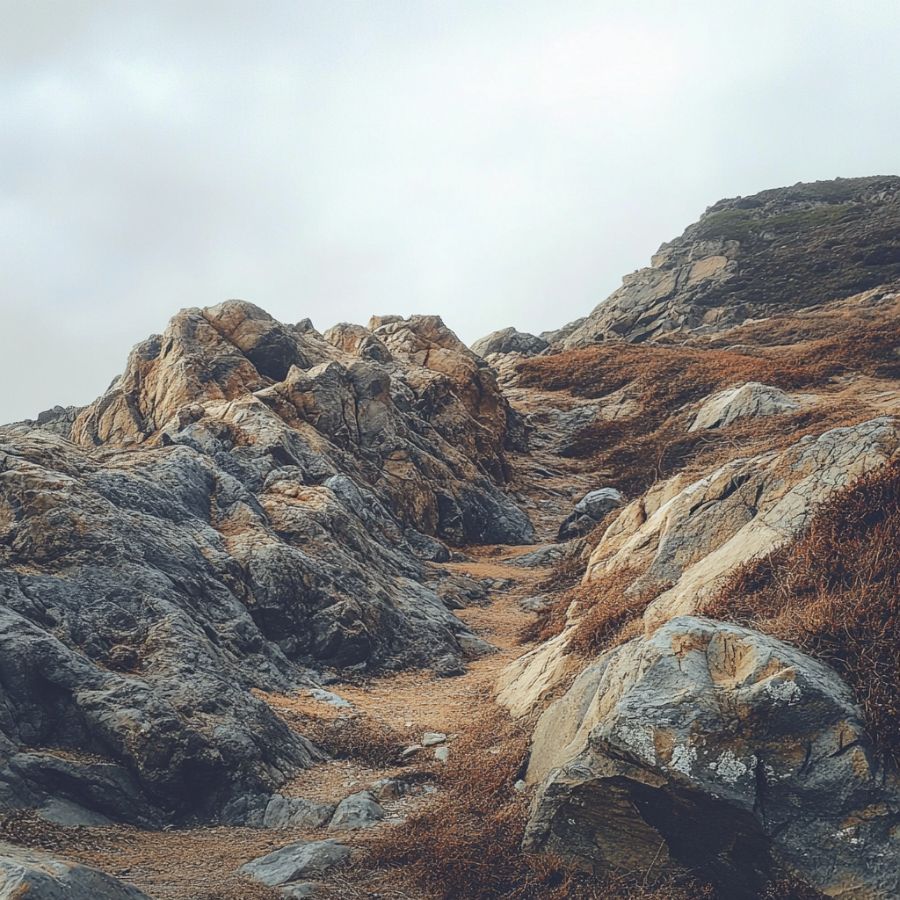
Rocky outcrops are great places to search. They are full of minerals and might have turquoise.
Explore the cracks and crevices. Turquoise often hides in these tight spaces.
Some Great Places To Start
Here are some of the better places in the state to start looking:
Always Confirm Access and Collection Rules!
Before heading out to any of the locations on our list you need to confirm access requirements and collection rules for both public and private locations directly with the location. We haven’t personally verified every location and the access requirements and collection rules often change without notice.
Many of the locations we mention will not allow collecting but are still great places for those who love to find beautiful rocks and minerals in the wild without keeping them. We also can’t guarantee you will find anything in these locations since they are constantly changing.
Always get updated information directly from the source ahead of time to ensure responsible rockhounding. If you want even more current options it’s always a good idea to contact local rock and mineral clubs and groups
Keweenaw Peninsula
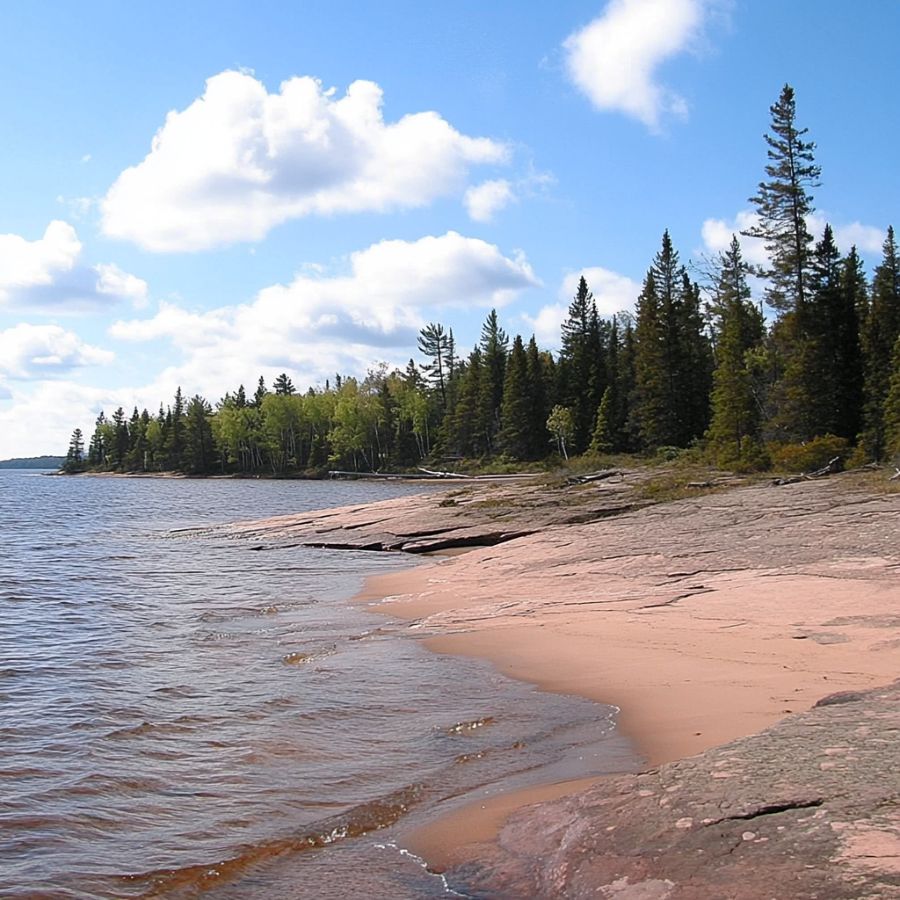
The Keweenaw Peninsula stretches into Lake Superior in Michigan’s Upper Peninsula. This remote area has a rich mining history and is famous worldwide for its massive copper deposits.
The area’s unique geology makes it perfect for finding various stones. Rockhounds often find chrysocolla, which locals call “U.P. Turquoise” because it looks similar to real turquoise.
The best spots to look for turquoise are around old mine dumps, especially near the Bumbletown (Bumblebee) Mine area.
Along with turquoise, you might find green prehnite, red jasper, and purple amethyst. Many rockhounds visit during summer when the weather is best for exploring.
Delaware Mine
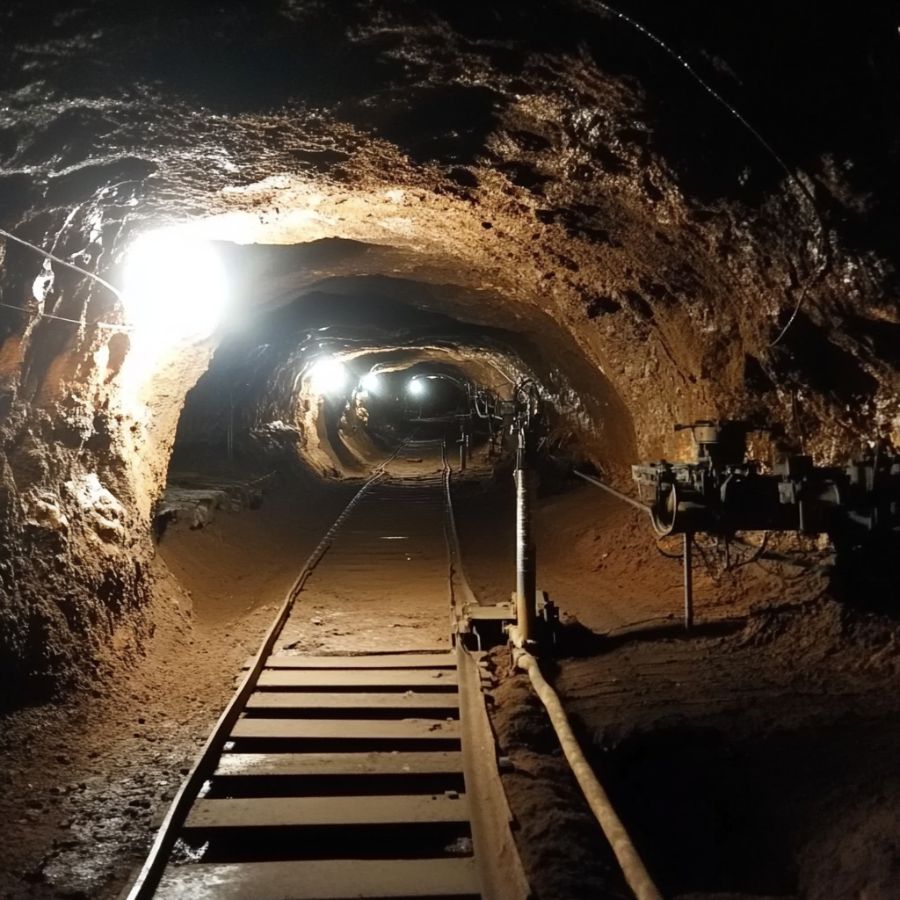
The Delaware Mine sits in Keweenaw County, Michigan, about 12 miles south of Copper Harbor. The mine goes down 1,400 feet through five different shafts, making it one of the deepest mines in the region.
The mine cuts through the Allouez Conglomerate, a rock layer that’s rich in minerals. While it’s mostly known for copper, the mine has also produced some turquoise.
The underground passages and old mine dumps are good spots to look for minerals. The mine’s walls show interesting patterns of different rocks packed together, formed millions of years ago.
You can take guided tours of the underground tunnels, which gives you a chance to see the old mining operations up close. The mine’s museum has examples of minerals found here, showing what to look for during your search.
Rockport State Recreation Area
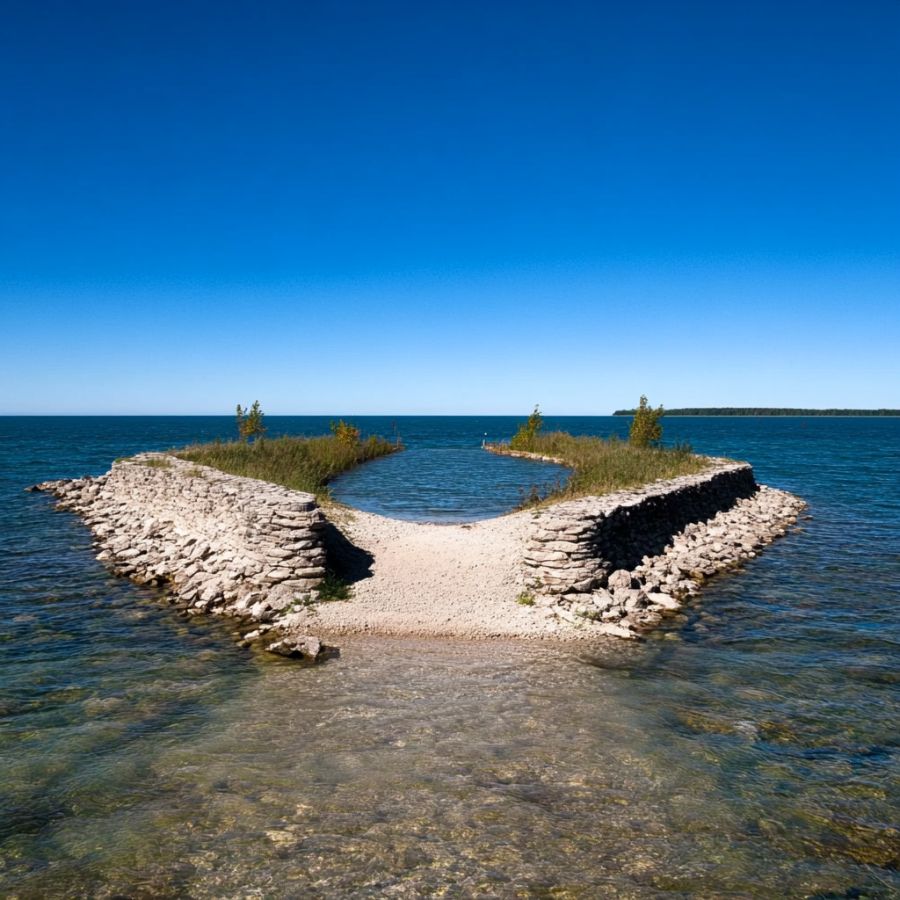
Rockport State Recreation Area is a large 4,237-acre park on Lake Huron’s shore in Michigan. The park sits north of Alpena and is known for its old limestone quarry and unique sinkholes. The quarry covers about 300 acres and is now a popular spot for rock collectors.
Rock collectors often visit the quarry area to look for fossils and minerals. The exposed rock faces and loose rocks on the ground are good spots to search.
While searching turquoise, you might find various minerals in the limestone deposits. The quarry’s different levels and open areas make it easy to explore.
The park also has a deep-water harbor and hiking trails that lead to good rock-collecting spots. These trails go through different geological areas, each with its own kinds of rocks and minerals.
Champion Mine
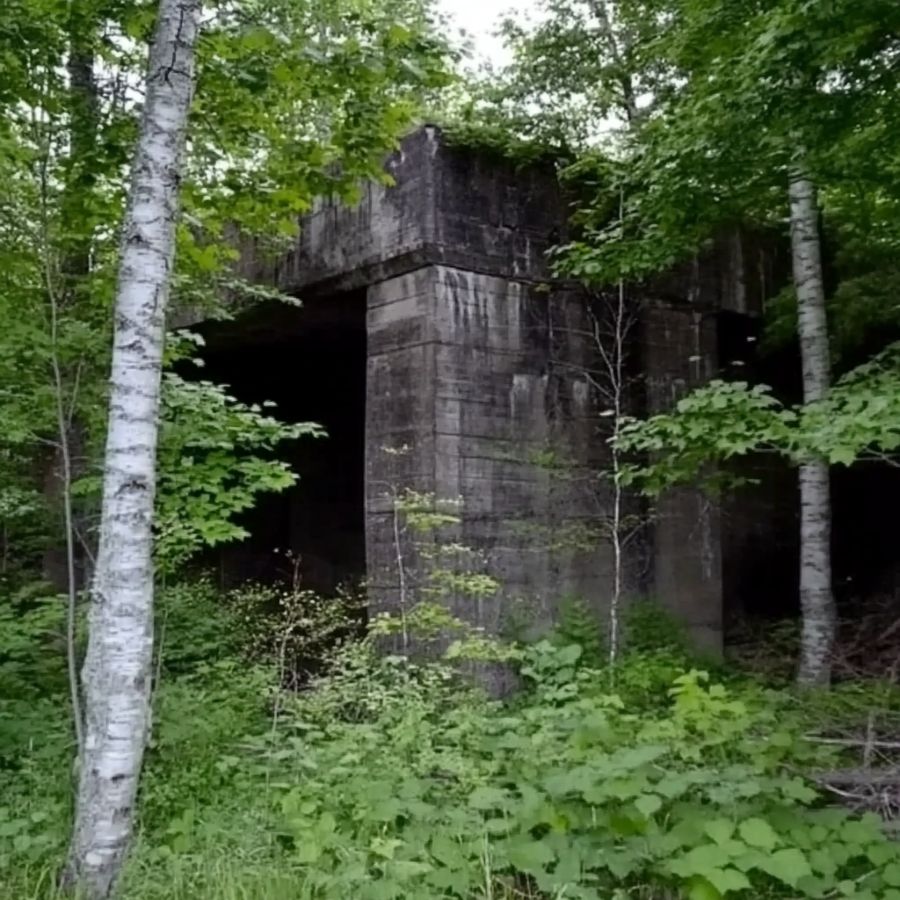
The Champion Mine is in Michigan’s Upper Peninsula, near the small town of Champion in Marquette County. This historic mine is part of the Marquette Iron Mining District, an area known for its rich mining history that started in 1844.
The mine covers a large area of 1,210 acres and goes as deep as 2,000 feet underground. The area has hills and rough terrain, with very old rocks from the Precambrian period making up most of the ground.
While looking for turquoise, the best spots to search are the mine dump piles, especially on the west side.
The mine area sits on part of the Canadian Shield, an ancient rock formation that gives the region its unique geology. The surrounding landscape shows clear signs of its mining past, with old equipment and structures still visible.
Places Turquoise has been found by county
After discussing our top picks, we wanted to discuss the other places on our list. Below is a list of the additional locations where we have succeeded, along with a breakdown of each place by county.
| County | Location |
| Keweenaw | Isle Royale National Park |
| Keweenaw | Manitou Island |
| Houghton | McLain State Park |
| Presque Isle | Presque Isle |
| Emmet | Petoskey State Park |
| Charlevoix | Fisherman’s Island State Park |
| Alger | Grand Marais (Agate Beach) |
| Keweenaw | Copper Harbor |
| Houghton | Calumet Waterworks Park |
| Marquette | Jasper Hill |
| Charlevoix | Norwood Township Beaches |
| Chippewa | Whitefish Point |
| Benzie | Point Betsie Lighthouse Beach |
| Leelanau | Van’s Beach |
| Leelanau | Christmas Cove Beach |
| St. Clair | Lakeport State Park |
| Allegan | Deerlick Creek Park |
| Allegan | Pier Cove Park |
| Keweenaw | Lake Superior Beaches near Ahmeek |
| Presque Isle | P.H. Hoeft State Park |
| Keweenaw | Seneca Mine |
| Marquette | Ropes Gold Mine |
| Ontonagon | Ontonagon Beach Gravels |
| Houghton | Torch Lake Beaches |
| Alger | Gull Point |
| Grand Traverse | Traverse City Area Beaches |

